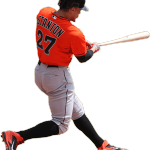The Best! That They can Be?
What would it take for the following Batters to become even better Hitters than they have already presented themselves to Be?
From a purely physical standpoint, Paul Goldschmidt doesn’t seem as imposing as the other 4 “bats-men” above. But as the truer representative of mechanical correctness, he reduces the “margins for error” better than the others, and therefore holds the top stop for “Batting Proficiency”. Although both he and Giancarlo Stanton initiate their addressing of the pitcher with hands and bat held high above the right shoulder, before delivery of the pitch they bring the bat to a more reasonable position below the shoulder by dropping the elbow closer to side, thus creating a lower center-of-gravity. From there they are both ready for the initial stages of the swing.
Where Giancarlo initiates the action of the swing with an obvious stride 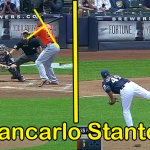
 Goldschmidt raises his front foot slightly from his starting position and immediately replaces it to the ground before the pitch is made
Goldschmidt raises his front foot slightly from his starting position and immediately replaces it to the ground before the pitch is made  . With his front foot already in place, he needs only for the ball to come into his hitting zone where all he has to do is drive his back bent-knee and back hip forward, braced by the straightening front leg which assists in opening the front hip.
. With his front foot already in place, he needs only for the ball to come into his hitting zone where all he has to do is drive his back bent-knee and back hip forward, braced by the straightening front leg which assists in opening the front hip. 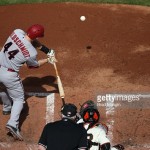 As the hips are turning by the application of force of the muscles of the groin, abdomen, and quads, the torso and shoulders have flattened the bat and together with the arms and hands are bringing it to the contact point with power and precision.
As the hips are turning by the application of force of the muscles of the groin, abdomen, and quads, the torso and shoulders have flattened the bat and together with the arms and hands are bringing it to the contact point with power and precision.
As the hips and back bent-knee drive forward, the front leg automatically straightens to keep the vertical axis of the body erect and intact as well as assure that the power elicited from the back-side allows the bat-to-ball contact to be with full force. (See 9/13/13 article – Inertia: Power from the Back of the Bus.)
(See 9/13/13 article – Inertia: Power from the Back of the Bus.)
Paul Goldschmidt will be a notch above Miguel Cabrera in visual acuity as long as “Miggy” continues to stride (even minimally) and allows head and eye movement to occur. When the pitch is in route and the batter’s foot is in the air, the batter does not know exactly when and where to put the foot down. That little hesitation is a margin-of-error that Goldschmidt has almost (not completely) eliminated, because his foot is already down (at least partially). His only flaw is in the fact that his front foot is not yet planted firmly to the ground. Because the heel is up, his weight is not equally distributed. He sometimes begins the swing with the weight slightly on his back side, preventing the power surge of the back hip from being optimally quick and complete. The other day on TV, I watch him hit a double into the left-field gap with just that kind swing. IF his foot had been planted completely, the same trajectory would have carried the ball over the fence.
Most good, precision hitters seem to instinctively know that if their hands are holding the bat on or over the bottom knob, the “instrument” for hitting will be slightly heavier during the swing than if a batter “choked-up”. The hitter who insists on holding the bat on the knob or over will find himself “just missing” pitches slightly away, and fouling them straight back , while the “smart-hitter” who “chokes-up”, at least slightly, will almost always have better “bat-control” and make better contact since the bat and extended arms will not feel the added weight and go under the pitched ball.
, while the “smart-hitter” who “chokes-up”, at least slightly, will almost always have better “bat-control” and make better contact since the bat and extended arms will not feel the added weight and go under the pitched ball. 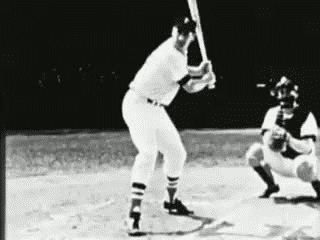 Examples of “Hitters” who “choke-up” are:
Examples of “Hitters” who “choke-up” are: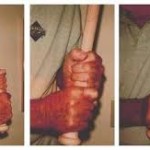 Ted Williams, Barry Bonds, Joe Morgan, Don Mattingly, Paul Goldschmidt, Hank Aaron, Tony Conigliaro.
Ted Williams, Barry Bonds, Joe Morgan, Don Mattingly, Paul Goldschmidt, Hank Aaron, Tony Conigliaro. 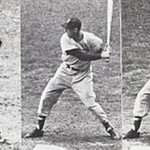
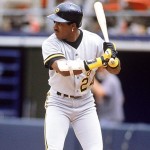
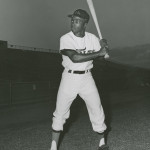


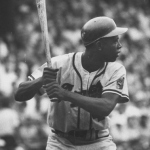
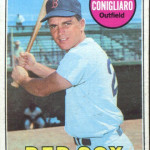 Those current hitters whose batting proficiency would improve if they’d reduced this particular “margin for error” are:
Those current hitters whose batting proficiency would improve if they’d reduced this particular “margin for error” are:

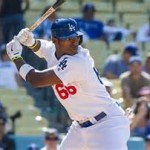
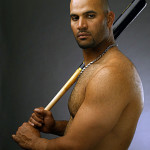

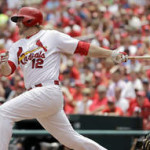 A-Rod, Puig, Pujols, Hanley, Mark Reynolds, and “This-Guy”-
A-Rod, Puig, Pujols, Hanley, Mark Reynolds, and “This-Guy”- 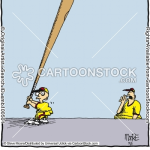
With everything that Paul Goldschmidt does correctly, he could be even better if he’d do the following: 1) Start here- – to eliminate any superficial excessive movement. 2) Have his front foot planted at that same point, at an angle of 120 degrees-at which the swing would begin simply by driving the back bent-knee and hip forward. The front knee will straighten automatically to stop the forward momentum of the body, thus keeping the “vertical axis” intact. (Read article: “Inertia… 9/13/13) 3) He already does everything else perfectly.
– to eliminate any superficial excessive movement. 2) Have his front foot planted at that same point, at an angle of 120 degrees-at which the swing would begin simply by driving the back bent-knee and hip forward. The front knee will straighten automatically to stop the forward momentum of the body, thus keeping the “vertical axis” intact. (Read article: “Inertia… 9/13/13) 3) He already does everything else perfectly.
Coming Soon: Part 4 – Bryce Harper


